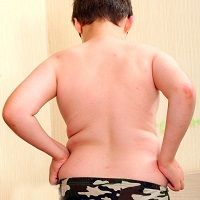Article
Study: Autistic Kids Out of Shape
Author(s):
Schools could do more to ensure that children with Autism Spectrum Disorders (ASD) are getting adequate exercise, a team of Oregon State University researchers found. Writing in Autism Research and Treatment Kiley Tyler and colleagues reported on their study measuring the physical fitness of children with ASD. The study was done at OSU in Corvallis, OR, where Tyler is a doctoral student in exercise and sport science.

Schools could do more to ensure that children with Autism Spectrum Disorders (ASD) are getting adequate exercise, a team of Oregon State University researchers found.
Writing in Autism Research and Treatment Kiley Tyler and colleagues reported on their study measuring the physical fitness of children with ASD. The study was done at OSU in Corvallis, OR, where Tyler is a doctoral student in exercise and sport science.
The children were tested on how long they could keep up a predetermined pace while running between two sets of cones. Their physical strength was measured by a hand grip dynamometer, and the amount of time they spent engaged in physical activities was recorded by an accelerometer, a monitor worn on an elastic belt. The research team also measured how flexible the subjects were.
They found that while the ASD children did just as well on the running test and the flexibility measures compared with a control group of “typically developing peers,” they did poorly on the handgrip test. The accelerometer readings also showed they spent more time in sedentary activities and less time engaged in exercise.
The researchers did not try to determine whether having ASD directly causes these differences or whether these children are weaker and less active because of other environmental factors, such as social difficulties in participating in sports.
“Based on the results of this study, strength is in need of improvement, suggesting a clear starting point for physical fitness based interventions,” Tyler wrote.
The team also said schools need to be aware that under federal rules protecting people with disabilities, children with ASD have a right to participate in physical education, and that since other studies have shown that kids with ASD have a higher prevalence of obesity that their peers, this is an important goal.
“We encourage parents, teachers, and administrators to include students with an ASD in physical fitness and physical activity assessments and provide them with individualized information about associated behaviors that can impact their health into adulthood” the team wrote.
The researchers also urged their peers to make sure they included children with ASD when doing assessments of educational efforts at promoting fitness.
“Too often, students with disabilities, and particularly students with ASD are left out of physical fitness assessment data collection,” they wrote.




